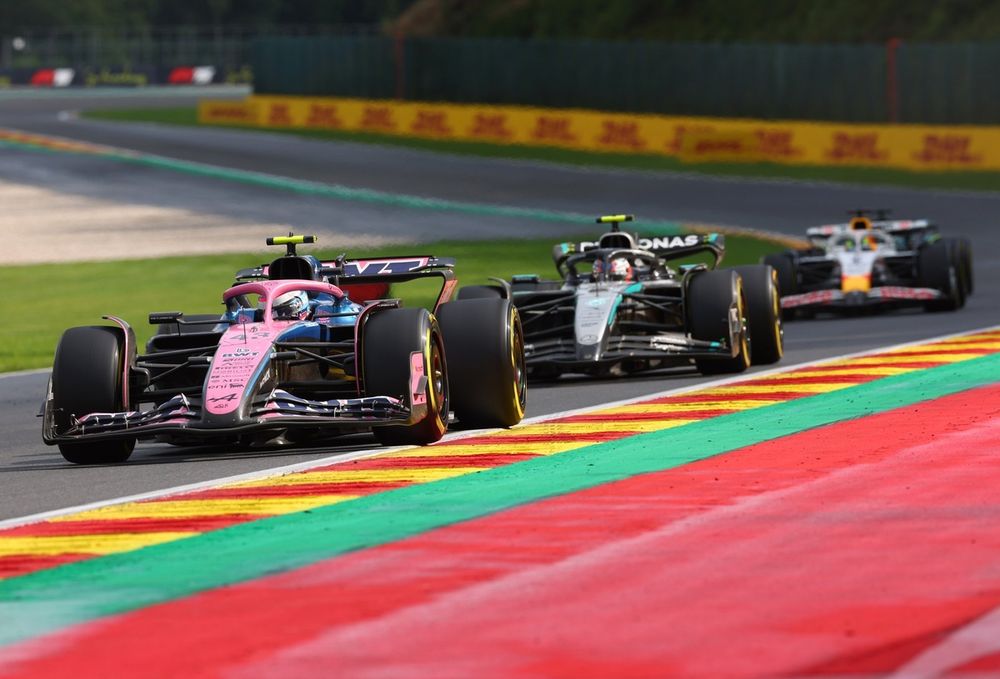
Sometimes in Formula 1 the flow of dynamic young drivers splutters or even takes a year off. 2025 wasn’t going to be one of those seasons; in recent years only 2019, where the likes of Lando Norris, George Russell and Alex Albon arrived hot from F2, provided such a rich and exciting influx of talent.
But many of those either new or new-ish to the game have struggled to make an impact. Jack Doohan, rightly or wrongly, didn’t even make it to the half-way point – peculiar, given Alpine rated him highly enough to promote him to a race seat rather than keep hold of Esteban Ocon.
Indubitably the present generation of ground-effect cars have created obstacles many drivers – even some experienced ones – have failed to surmount. And as performance converges in the final year of the ruleset, many teams have reached a point where peak downforce has come at the expense of driveability. Competitors who like to brake late and hard, balancing declining braking effort against increasing steering angle, have suffered the most.
Oliver Bearman is one of the full-season rookies who has had more dramatic ups and downs in a Haas car which is clearly less benign than the Ferrari in which he made his sizzling debut in Saudi Arabia last year. Speaking exclusively to Autosport ahead of the summer break, Bearman suggested the coming technical ‘reset’ will reduce the premium on experience.
“It's definitely the case that other drivers on the grid have been driving this era of car for a very long time,” said the 20-year-old.
“So they understand how it works, how to drive around its limitations and really how to get the most out of it. So there's no doubt that us as rookies, having less experience in this era of car, we are behind.
“I think next year will level the playing field a lot, and I'm looking forward to hopefully seeing a performing [Haas] car next year.”

Unlike many previous changes to the technical regulations – even the wide-ranging ones – next season’s package will have a bigger impact than merely rearranging the grid in order of which team comes up with the best solutions first. The shift to a 50:50 ratio of power delivery between the electrical system and the internal combustion engine will increase the driver’s workload as they juggle power modes and other ‘tools’ through the lap.
Narrower, lighter cars with active aerodynamics will have a different performance dynamic and, taken as a whole, the changes will require drivers to fundamentally rethink their styles. Ferrari’s Charles Leclerc likened it to having to abandon “muscle memory”.
Several other drivers have commented negatively on the amount of switch-fiddling which will be required to manage the limited electrical deployment through the lap; Oscar Piastri pointed out that it would likely add nothing to the spectacle.
“We've got to make it easier on the driver,” said Williams boss James Vowles, “because I think the workload is actually very, very difficult for the driver at the moment.”
But this adaptation process will also bring opportunities because, naturally, some drivers will make the transition quicker than others. And those who, like Bearman, have less ‘baggage’ to shed could stand to benefit.
A key problem with the current generation of cars is that they have to run low and stiff to maximise the effectiveness of the floor and driver. This makes them unyielding and unforgiving over bumps, reduces the variety of racing lines – there are fewer rewards for riding kerbs – and less stable under braking and acceleration as changes in pitch affect downforce.

Adopting extreme suspension geometries to reduce these pitch changes saps driver ‘feel’ and can add to a downward spiral in confidence. Of the current rookie set, Isack Hadjar has been consistently the most impressive – but the Racing Bulls car is more benign.
At Sauber, the car was so poor that Gabriel Bortoleto’s early season performances were notable, chiefly for how close he was on lap time to his veteran team-mate Nico Hulkenberg. A new floor and associated upgrades has proved transformative and Bortoleto has now begun to put decent points on the board.
Doohan’s replacement at Alpine, Franco Colapinto, has also reported declining confidence, saying in Hungary: “The moment I would have been the closest to Pierre [Gasly] is in my first race [Imola], so we are just trying to understand why.” Given his generally strong performance levels at Williams last year, much was expected of Colapinto – but it seems like the further he pushes the Alpine, the harder it bites him.
Andrea Kimi Antonelli has endured a turbulent maiden F1 season with Mercedes and only just seems to have begun rebuilding his confidence after the team dropped the anti-left rear-suspension geometry first seen at Imola.
“The cars are difficult to drive in this era,” emphasised Bearman. “And you need full confidence in the car, because the level of downforce is the highest we've seen. So when it goes wrong, it goes wrong in a big way and you can't catch it.
“So if you don't have full confidence, it's infinite lap time loss. And there were some scenarios in qualifying where I wasn't fully confident with the car, and the lap time I lost was hugely disproportionate to the difference in confidence.

“It's really easy to get into a spiral of bad levels of confidence, and therefore really important to grab it back as soon as possible. But it is a real issue, and definitely with more experience, you learn how to overcome it. But at this stage in our career it is tough.”
What’s clear is that next season, regardless of how the grid shakes out in performance order, the drivers who thrive will have a particular set of skills. They will be those who learn quickly, who are most adaptable, and who can most quickly shed the ingrained habits which are holding them back.
There will be a premium, too, on mental bandwidth – the ability to juggle multiple stimulus inputs while maintaining a broader awareness of what’s happening in the race beyond the immediate view front and rear.
So the Max Verstappens and Fernando Alonsos of this world can feel relatively sure of their future. Everybody else? Time to knuckle down to some homework…







